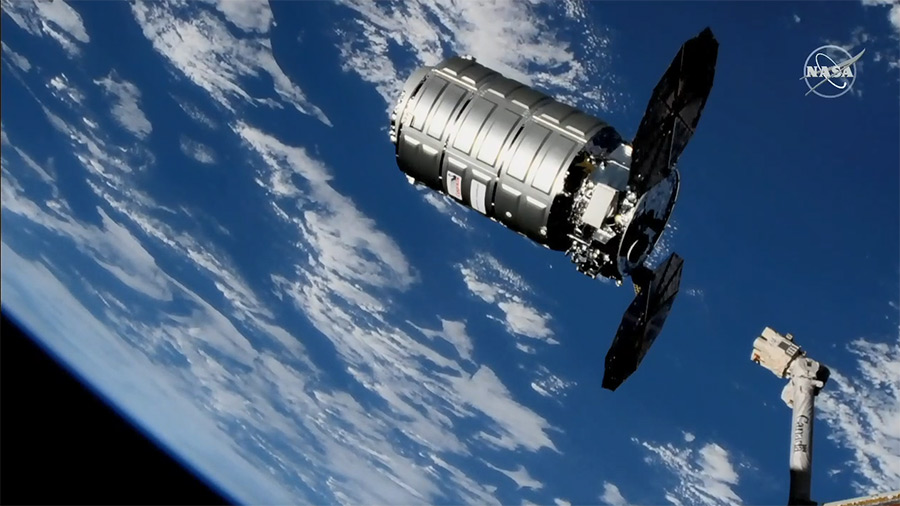Cygnus Cargo Ship Takes Out the Trash at the International Space Station
Two astronauts aboard the International Space Station sent a cargo capsule containing 5,500 lbs. (2,500 kilograms) of trash on its way today (Feb. 8); the Cygnus capsule is destined to burn up in Earth's atmosphere later this month.
But before it does, it has a couple more tasks to accomplish: It will deploy a collection of cubesats over the next couple of weeks. It will then deorbit on Feb. 25.
Northrop Grumman launched its Cygnus capsule on Nov. 17 from Wallops Flight Facility on Wallops Island in Virginia, carrying about 7,400 lbs. (3,400 kg) of supplies and scientific equipment. The capsule arrived at the orbiting laboratory two days later, where NASA astronaut Serena Auñón-Chancellor captured it and monitored the docking process.
Today's release procedure was overseen by NASA astronaut Anne McClain and Canadian Space Agency astronaut David Saint-Jacques, who arrived at the space station in December to replace Auñón-Chancellor and her colleagues.
Now that the Cygnus capsule is safely away from the International Space Station, Northrop Grumman engineers will begin maneuvering it to the orbits required to deploy its payloads. Those payloads include cubesats built by students and commercial customers and a satellite that will itself deploy its cargo, a collection of 100 so-called femtosatellites — tiny satellites that weigh less than 3.5 ounces (100 grams).
The cargo capsule's mission will finally end with controlled atmospheric re-entry on Feb. 25, which will completely destroy the capsule and the trash it carries.
Right now, the next scheduled launch to the space station will be SpaceX's uncrewed test flight of its Crew Dragon capsule, which is due to launch March 2, although it has already been delayed multiple times. That flight will dock with the space station but not deliver any cargo or crew.
Breaking space news, the latest updates on rocket launches, skywatching events and more!
Email Meghan Bartels at mbartels@space.com or follow her @meghanbartels. Follow us @Spacedotcom and Facebook. Original article on Space.com.

Meghan is a senior writer at Space.com and has more than five years' experience as a science journalist based in New York City. She joined Space.com in July 2018, with previous writing published in outlets including Newsweek and Audubon. Meghan earned an MA in science journalism from New York University and a BA in classics from Georgetown University, and in her free time she enjoys reading and visiting museums. Follow her on Twitter at @meghanbartels.

